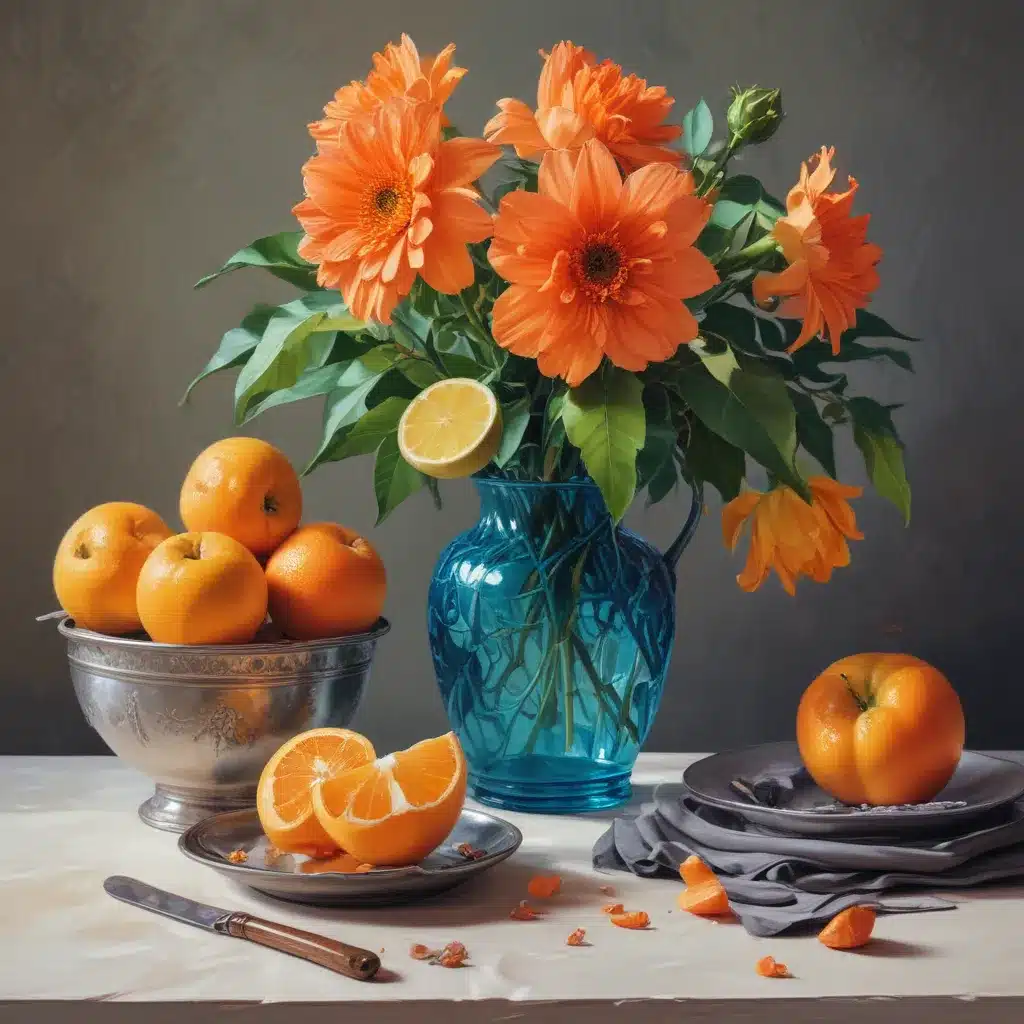
As artists, we often seek to elevate the ordinary and find the extraordinary in the everyday. One of the most effective ways to achieve this is through the timeless genre of the still life. By training our eyes to see the beauty inherent in commonplace objects and scenes, we can infuse the mundane with a sense of the sublime. And when we pair this creative vision with the luminous, layered qualities of acrylic paint, we unlock a world of artistic possibility.
Now, this might seem counterintuitive…
The Power of Still Life
The still life genre, with its focus on inanimate objects such as food, flowers, or household items, has a long and respected history in the art world. Far from being a simple exercise, the still life painting can be a profound means of artistic expression. At its core, the still life invites us to slow down, observe closely, and find the poetry in the ordinary.
When we train our gaze on the humble and familiar, we start to notice details we may have previously overlooked. The graceful curve of a vase, the mottled texture of a fruit, the play of light across a tabletop – these seemingly mundane elements become vibrant and evocative under the artist’s careful attention. By elevating the commonplace, we infuse these objects with new meaning and significance.
Still life paintings can also evoke powerful emotional responses. The arrangement of objects, their symbolic associations, and the artist’s treatment of light and shadow all contribute to the overall mood and atmosphere. A simple bouquet of flowers might radiate joy and vitality, while a solitary tea cup could convey a sense of quiet contemplation. The still life has the ability to touch the viewer’s heart and imagination in profound ways.
Luminous Acrylic Painting
When it comes to capturing the essence of the still life, the medium of acrylic paint offers a versatile and compelling approach. Acrylics, with their unique combination of fluidity and opacity, allow artists to explore a wide range of techniques that can elevate the ordinary into the extraordinary.
One of the hallmarks of luminous acrylic painting is the use of transparent layering. By building up transparent washes of color, artists can create a sense of depth and atmosphere that goes beyond simple surface representation. Each layer interacts with the ones beneath, creating a glowing, ethereal quality that suggests the play of light across the subject matter.
Carefully selecting a vibrant color palette is also key to bringing the still life to life. Acrylics offer an expansive range of hues, from the deepest, richest tones to the most delicate, ethereal shades. By thoughtfully combining colors, artists can evoke the specific mood and emotion they wish to convey. A still life of autumn fruits, for example, might feature a harmonious blend of warm ochres, russet reds, and golden yellows, while a floral arrangement could showcase a cool, serene palette of blues, greens, and lavenders.
In addition to layering and color, palette knife techniques can lend a unique and expressive quality to acrylic still life paintings. By using the edge of the knife to apply and manipulate the paint, artists can create a sense of tactility and energy that complements the inherent softness of the subject matter. Thick, gestural strokes can suggest the weight and solidity of objects, while delicate scrapes and scratches can evoke the ephemeral nature of a flower or the transparency of glassware.
Bringing the Mundane to Life
The true power of the acrylic still life lies in its ability to transform the ordinary into the extraordinary. By approaching common objects and scenes with a keen eye, an open heart, and a willingness to experiment, artists can infuse the mundane with new life and meaning.
One of the keys to this transformation is mindful observation. Rather than simply glancing at a subject, the artist might want to train their gaze to linger, to notice the nuances of form, texture, and light. What might initially appear dull or uninteresting can reveal a wealth of visual poetry when examined closely.
This deep engagement with the subject matter then informs the artist’s creative interpretation. Through the use of color, composition, and technique, the still life painting becomes a vehicle for the artist’s unique vision and emotional response. A simple arrangement of fruit, for example, might be rendered with bold, expressive brushstrokes and a vibrant, almost electric palette to convey a sense of joy and vitality. Alternatively, a meditative study of a single teacup could feature delicate, transparent washes and muted tones to evoke a mood of quiet contemplation.
Ultimately, the acrylic still life painting is a testament to the power of artistic transformation. By elevating the mundane and finding the sublime in the everyday, the artist invites the viewer to see the world with fresh eyes. Through the luminous, layered qualities of acrylic paint, the humble object or scene is imbued with a sense of wonder and significance, encouraging the audience to pause, reflect, and appreciate the beauty that surrounds us in our daily lives.
Whether you’re a seasoned artist or a creative explorer just beginning your journey, the still life genre offers a rich and rewarding avenue for artistic expression. By embracing the power of acrylic paint and the inherent beauty of the ordinary, you can unlock new realms of inspiration and create work that resonates deeply with both yourself and your audience. So, take a moment to observe the world around you, and let the humble become the extraordinary.
Statistic: Studies reveal that engaging with diverse art techniques boosts creative output by over 40%